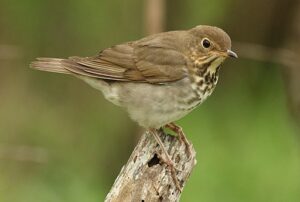
TonyCastro, CC BY-SA 4.0, via Wikimedia Commons
The tragedy of bird migration deaths has become a top-desk issue over the last few years. During migration birds of many species fall victim to lights and therefore crash into tall buildings. Fortunately, some cities along the greatest migratory pathways have opted to extinguish lights so that the birds do not become drawn to them unnecessarily.
But even so, birds crash into tall buildings in window collisions that happen outside migration season. The frightful fact compiled by the Chicago Bird Collisions Monitors puts the deaths as high as an eventful billion birds—annually. That is a horrible number of deaths that – on the surface – seems unfortunate due to the need for buildings. This Chicago group goes out daily during the early morning hours to locate injured birds and get them the recuperative help they need. But they are also involved in studies to help change this unnerving number of deaths.
Built With Birds In Mind
As a result of such devastation to our birds, the responsible ethics of the architectural design industry have begun to recognize the need to create more bird-friendly buildings with innovative designs. Chicago has become a standard bearer with such interest. In 2009, The 82-story Aqua Building, architecturally designed by Jeanne Gang, was erected with the purpose of preventing birds from flying into its windows.
It introduced ink-printed glass that contains ground-up glass in a design known as fritted glass. This glass provides an opaque appearance that discourages birds from flying toward it. Additionally, the building was constructed without straight elements. For example, the balconies are outfitted with wavy features that give a natural appearance to them. The forethought put into the Aqua Building’s design gives birds the natural ability to avoid collision.
The built-in fritted glass discourages reflections that confuse birds. What we have with the Aqua Building is a unique construction with its unusual wavy appearance that is also hard at work within its design to avoid bird deaths.
Building Esthetics That Save Birds
The Aqua Building is not the only attempt being made to create bird-friendly buildings. Others are being designed with birds in mind, specifically to help birds avoid the necessary structures. In many cases, there is lower-level collision avoidance being thought out by planting foliage in front of glass. This foliage encourages birds to land on the limbs rather than be distracted and fly directly into the window. Another trick is to mark windows so that the glass is visible to birds as something to avoid. Art designs discourage birds and are useful for alerting the creatures before they make a fatal mistake.
Other windows have dot appliques applied as a deterrent. Many buildings that use this technique have found that bird deaths have significantly decreased. Other cities have employed the use of artwork and etching on glass to help birds recognize the potential danger in front of them. We have an alert group of forward thinkers concerned about bird impacts that only seems to be growing more thoughtful and fruitful with their designs.
Moving forward, it is hoped that as more buildings are constructed, the designs will be modified to help steer birds away from their windows rather than become death traps. There are now many cities that are thinking about birds. For this, we are immeasurably grateful.
